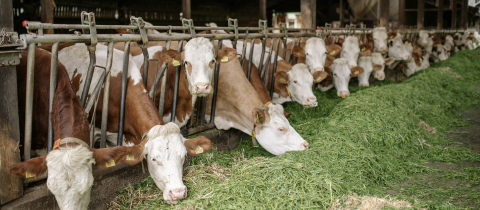During the Civil War northern forces blocked a number of Confederate ports. One of the consequences of the blockade was a dire shortage of cinchona bark imported from South America. The bark was in great demand, being the first substance ever found to be an effective treatment for malaria. Quinine, first isolated in 1820 was the active ingredient. Because of a lack of quinine, word went out from the surgeon general of the Confederate army asking that a search be launched for any native plants that might have fever reducing properties similar to cinchona.
An obvious starting point for such a search was plants that had been used by native North Americans for their supposed medicinal properties. One of these was goldenseal, long used as a snake bite remedy and health tonic by natives. Like quinine, goldenseal tasted very bitter, so it seemed a good candidate for testing against malaria. Unfortunately it didn’t work, but doctors noted that when they used goldenseal in combination with quinine, less quinine was needed. They didn’t understand why this was the case, but today we can offer an explanation thanks to our knowledge about how drugs are metabolized. Our body regards drugs as foreign intruders and attempts to eliminate them. One common method is through the action of the Cytochrome P450 enzymes that have the ability to break down small molecules. Like any plant, goldenseal contains numerous compounds, but two, namely berberine and hydrastine, bind to these enzymes and inhibit their activity. The result is that drugs are not broken down, they stay in the bloodstream longer and therefore become more potent. This can be a problem. Many medications are metabolized by the Cytochrome P-450 enzymes meaning that inactivation of these enzymes leads to higher than desired blood levels of the drug. Some of the drugs that fall into this category include Prozac, Lopressor, Zyprexa, Halcion, Viagra along with many others.
The best bet is not to use goldenseal in combination with any prescription drug, especially given the lack of evidence for any of goldenseal’s supposed benefits. The ailments it purportedly benefits include the common cold, digestive problems, diarrhea, constipation, hemorrhoids, flatulence, acne, dandruff, eye inflammation, chronic fatigue, gonorrhoea and fever. In general, when such a cacophony of benefits are attributed to a substance, it is unlikely that any of them will pass scientific muster. One of the popular myths about goldenseal is that it can mask the presence of illegal drugs in the urine. This idea can be traced back to “Stringtown on the Pike,” a novel written by chemist John Uri Lloyd in 1901 in which a boy is convicted for poisoning his uncle with strychnine. The tragedy is that the chemist who testified about the strychnine poisoning made a mistake. Goldenseal root taken in the uncle’s morning tonic produced a false positive for strychnine and the uncle’s death was actually from natural causes. Utterly devastated, the chemist takes his life with “too dangerous a drug to be known through science to the public.” Lyoyd came up with this plot after having noted the “remarkable correspondence” between the actions of strychnine and the goldenseal compound hydrastis in his research. Somehow this gave rise to the myth that goldenseal can mask drugs in the urine. It can’t.







